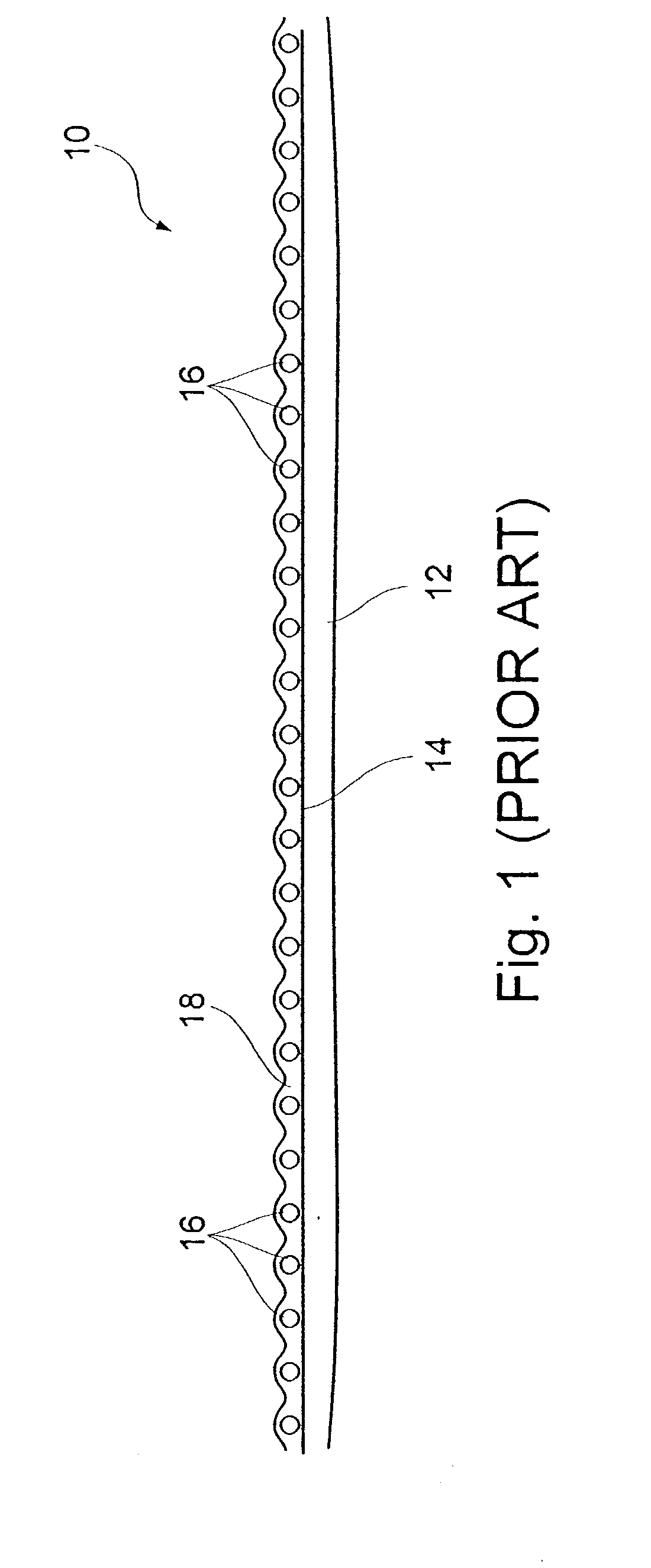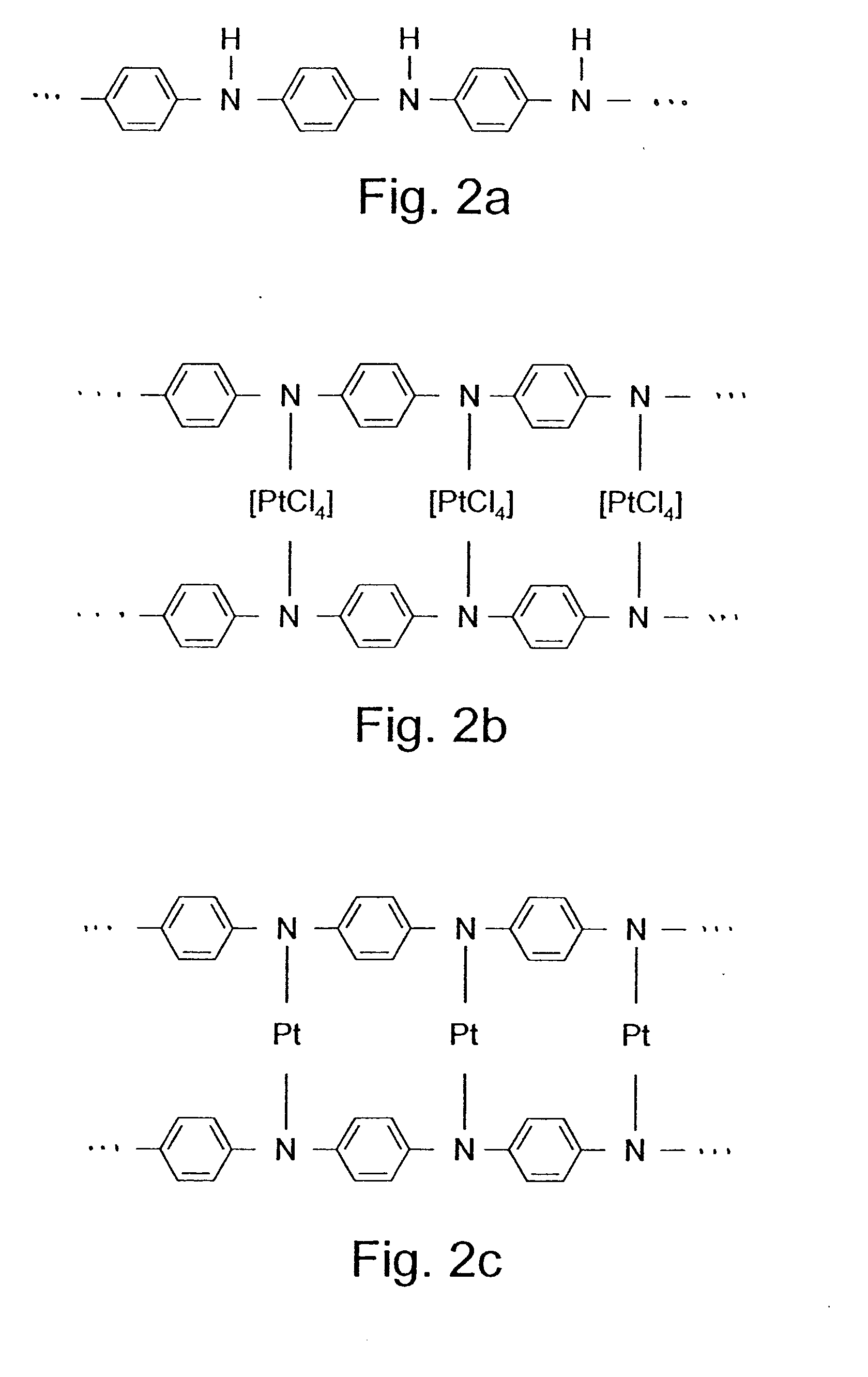Class of electrocatalysts and a gas diffusion electrode based thereon
a technology of electrocatalysts and electrodes, which is applied in the field of electrocatalysts and gas diffusion electrodes based thereon, can solve the problems of no practical solution, the greatest amount of fuel, and the greatest amount of pollutants, and achieves the effects of high ionic mobility, high electrical conductivity, and easy production
- Summary
- Abstract
- Description
- Claims
- Application Information
AI Technical Summary
Benefits of technology
Problems solved by technology
Method used
Image
Examples
example 2
[0055] As in example 1, 4.73 g of polyaniline were suspended in 100 ml of distilled water. 80 ml of 1.15% aqueous H.sub.2IrCl.sub.6 were added slowly to the polyaniline suspension over the course of 60 minutes while stirring constantly. The resulting polyaniline-IrCl.sub.4 complex was separated by centrifuging and decanting. The resulting solid seas rinsed with distilled water until the rinse water had a pH of 7.
[0056] The reductant solution of Example 1 was added to the polyaniline-IrC.sub.4 complex over the course of 2 hours at a temperature of 60.degree. C. The product of this reaction was rinsed Faith distilled water until the rinse water had a pH of 7, and then was dried at 110.degree. C. for 24 hours.
example 3
[0057] 4.90 g of polypyrrole powder were suspended in 100 ml of distilled water. 105 ml of 0.98% aqueous H.sub.2PtCl.sub.6 were added to the polypyrrole suspension over the course of 60 minutes while stirring constantly. The resulting polypyrrole-PtCl.sub.4 complex was separated by centrifuging and decanting. The resulting solid was rinsed with distilled water until the rinse water had a pH of 7.
[0058] The reductant solution of Example 1 was added to the polypyrrole-PtCl.sub.4 complex at a temperature of 60.degree. C. over the course of 2 hours. The product of this reaction was rinsed with distilled water until the rinse water had a pH of 7, and then was dried at 110.degree. C. for 24 hours.
example 4
[0059] As in example 3, 3.92 g of polypyrrole powder were suspended in 100 ml of distilled water. 70 ml of 1.15% aqueous H.sub.2IrCl.sub.6 were added to the polypyrrole suspension over the course of 60 minutes while stirring constantly. The resulting polypyrrole-IrCl.sub.4, complex was separated by centrifuging and decanting The resulting solid was rinsed with distilled water until the rinse water had a pH of 7.
[0060] A reductant solution was prepared by dissolving 1.3 g NaBH.sub.4 and 0.6 g NaOH in 100 ml of distilled water at room temperature with stirring for 30 minutes. This reductant solution was added to the polypyrrole-IrCl.sub.4 complex over the course of 2 hours at a temperature of 60.degree. C. The product of this reaction was rinsed with distilled water until the rinse water had a pH of 7, and then was dried at 110.degree. C. for 24 hours
[0061] Table 1 shows the rate of oxygen gas liberation (cm.sup.3 per mg metal (Pt or Ir) per hour at room temperature and atmospheric pr...
PUM
 Login to View More
Login to View More Abstract
Description
Claims
Application Information
 Login to View More
Login to View More - R&D
- Intellectual Property
- Life Sciences
- Materials
- Tech Scout
- Unparalleled Data Quality
- Higher Quality Content
- 60% Fewer Hallucinations
Browse by: Latest US Patents, China's latest patents, Technical Efficacy Thesaurus, Application Domain, Technology Topic, Popular Technical Reports.
© 2025 PatSnap. All rights reserved.Legal|Privacy policy|Modern Slavery Act Transparency Statement|Sitemap|About US| Contact US: help@patsnap.com



